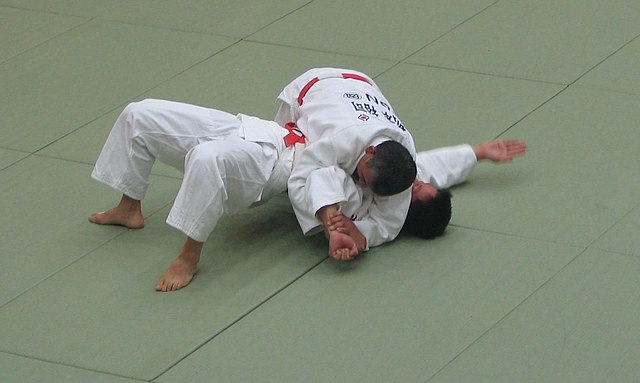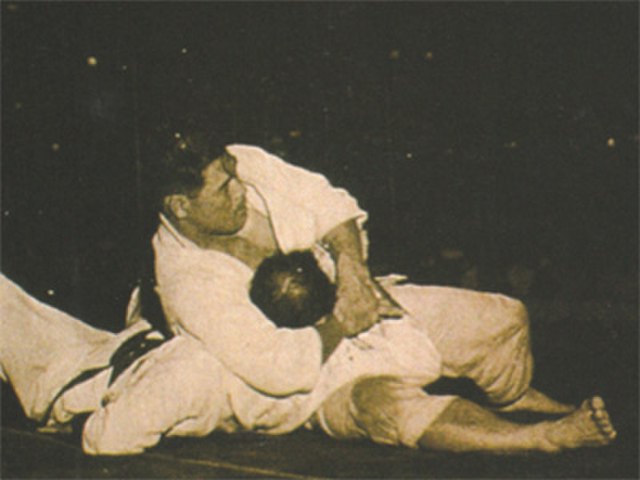An armlock in grappling is a single or double joint lock that hyperextends, hyperflexes or hyperrotates the elbow joint or shoulder joint. An armlock that hyper-extends the elbow is known as an armbar, and it includes the traditional armbar, the shoulder triangle armbar, and the shotgun armbar. An armlock that hyper-rotates the arm is known as an armcoil, and includes the americana, kimura, and omaplata. Depending on the joint flexibility of a person, armcoils can either hyper-rotate only the shoulder joint, only the elbow joint, or both the elbow joint and shoulder joint.
Armbar counter on the ground normally is a body roll towards the opponent in order to prevent overextension of the captured elbow bend
A fighter attempts to escape from an armbar by slamming the opponent to the ground.
Standard americana execution
Ude-garami (americana) being attempted in Judo kata
Grappling is a fighting technique based on throws, trips, sweeps, clinch fighting, ground fighting and submission holds.
Masahiko Kimura vs. Hélio Gracie, a high-profile 1951 bout between Masahiko Kimura and Hélio Gracie
Hawaiian State Grappling Championships, August 2004.
Ancient Egyptian wrestling
A Greek bronze statue from 2nd century BC depicting Pankration. The standing fighter is applying an armlock, a grappling technique. From the Staatliche Antikensammlungen in Munich.








